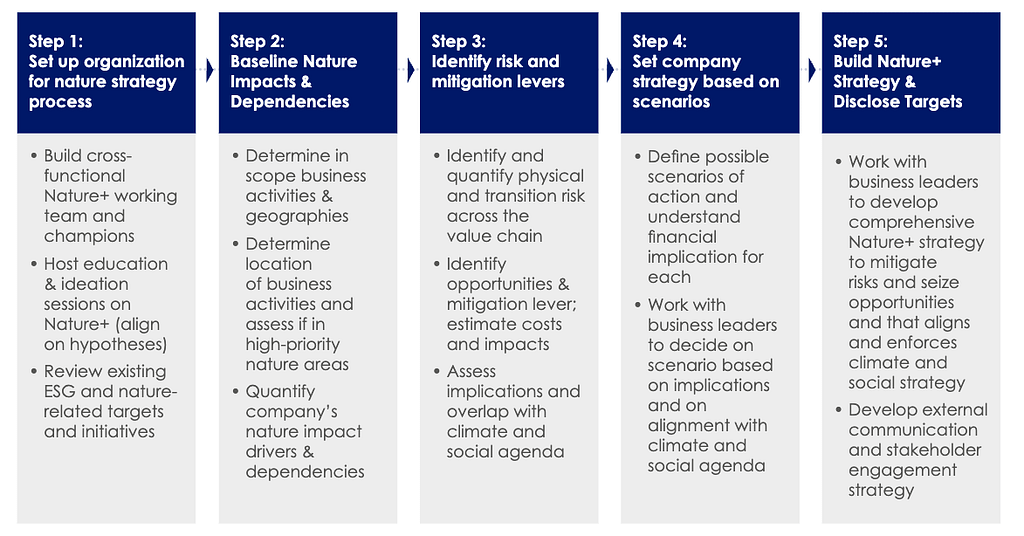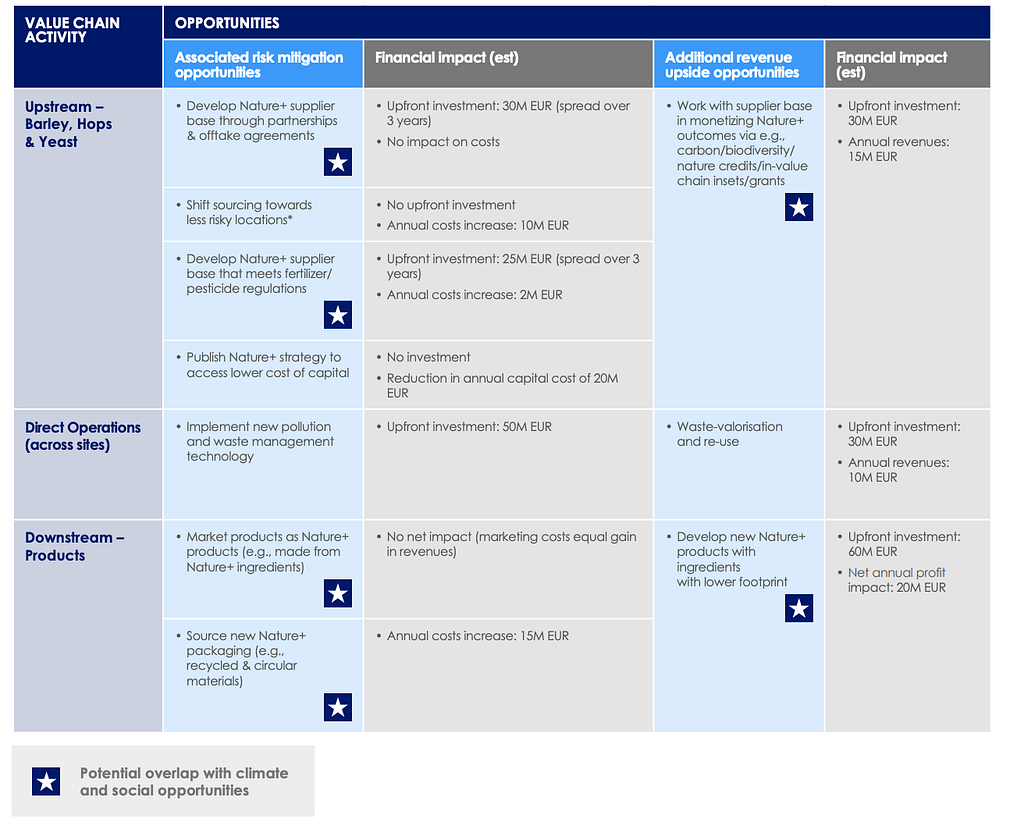Our team deals with nature and business every single day.
Over the past year, we have written about how your company’s relationship with nature drives your success, and reasons that companies should prioritize nature and biodiversity. We have explained what science-based targets for nature are and shared details of new guidelines that we helped set with the Science Based Target Network.
Yet, we’re not seeing the business action that the crisis demands.
How can nature actually get the attention it deserves in the business world?
We are excited to release a new white paper with our friends at Systemiq: “Nature Risk is Business Risk – The Best Companies Manage Both.” (Find the report here.)
“Over the past few years, nature has emerged as a critical industry topic,” said Facundo Etchebehere, the SVP of Sustainability Strategy & Partnerships at Danone. “This is great news given the urgent need to address nature loss and the direct and indirect risks nature loss poses to companies. And yet, with regulation and standards evolving so rapidly, it can be daunting for companies to take on this topic, especially while keeping their focus on climate. This report paints a clear, concise picture of how companies can take on the challenge in a structured, methodical way.”
The report title speaks for itself: “Managing nature impacts and dependencies is critical for future business viability and strategic advantage,” the paper states. “However, nature is complex, and interactions between nature and business can be challenging to identify and manage, especially when companies operate in complex, multi-tiered value chains.”
Where should businesses start, then? And how?
Today, numerous disclosure and target-setting frameworks offer a starting place.
And the next step is even more critical: defining and implementing a viable nature risk identification and mitigation strategy. Our paper proposes an approach for how to do this.
Why now?
There has never been a more critical time to focus on nature than now.
“More and more companies are waking up to the fact that nature is not external to their business operations, but rather at the heart of it,” said Brian Shaw, director of Metabolic’s Agrifood & Biodiversity consulting division. “A company that engages with nature as the enabling factor that it is, opens itself up to new business opportunities while at the same time mitigating tangible business risks.”

We worked with Systemiq over the past several months to explore how businesses can build off the proliferation of frameworks to connect the “nature” topic into core strategy, risk management, and financial performance conversation.
Our proposed five-step approach shows how businesses can integrate nature strategies and address nature-related business risks. This approach is detailed on page 14 of the report.
Our team at Metabolic then helped to illustrate what this actually means, using our tools and methodologies, with a fictional beverage company we’ll call happydrink. The business activities in scope are upstream sourcing of raw materials – barley, hops, and yeast; their direct operations; and the downstream sales and use of their products.

For instance, Step 2 in the approach is to understand your nature baseline and assess location-specific risks. For happydrink, this analysis shows that: “the biggest nature-related impacts come from barley procurement and from the operations; the largest physical risks are related to water pollution and land degradation. A further deep dive in the specific locations will help to further prioritize physical risks, as well as to analyze transition risks. The outcomes of this step will also help to prepare for SBTN target setting and CSRD reporting.”




